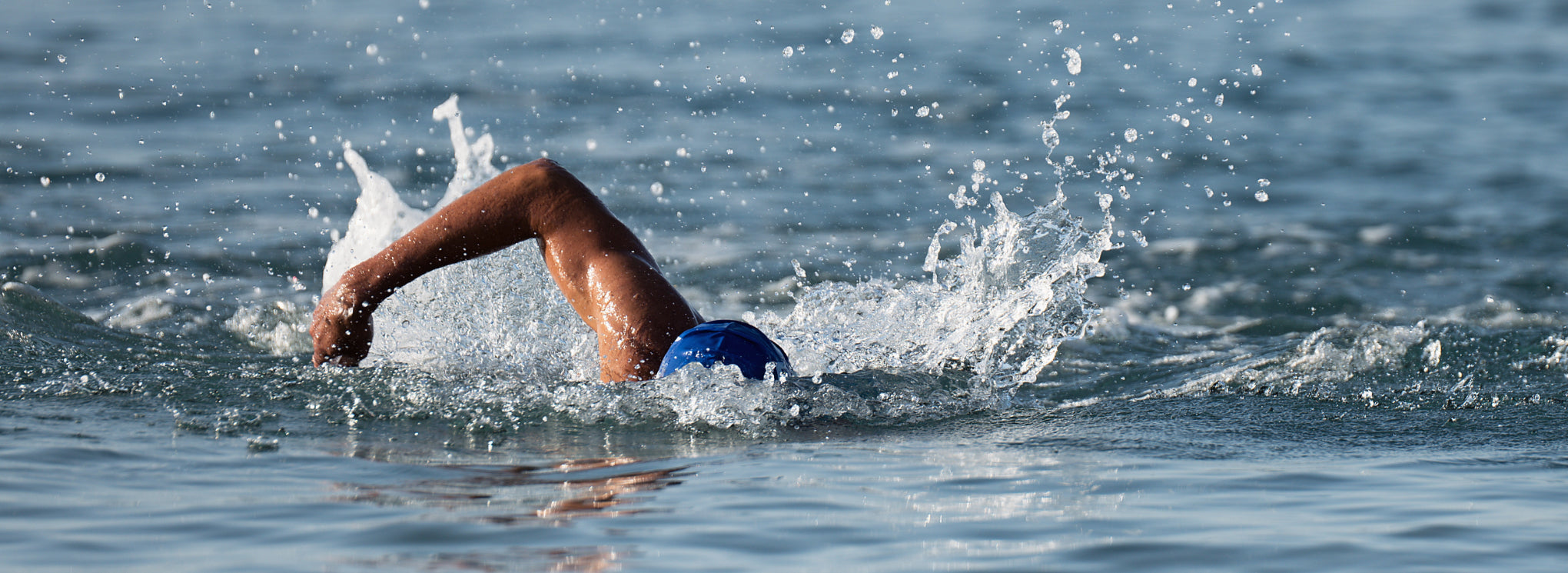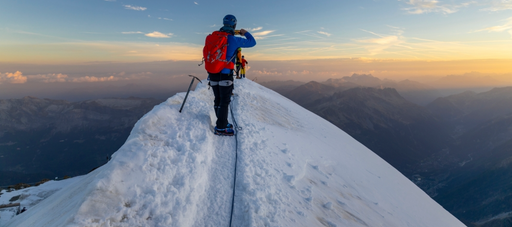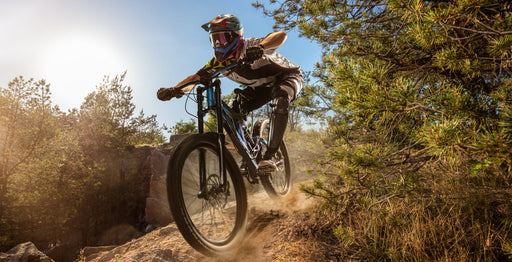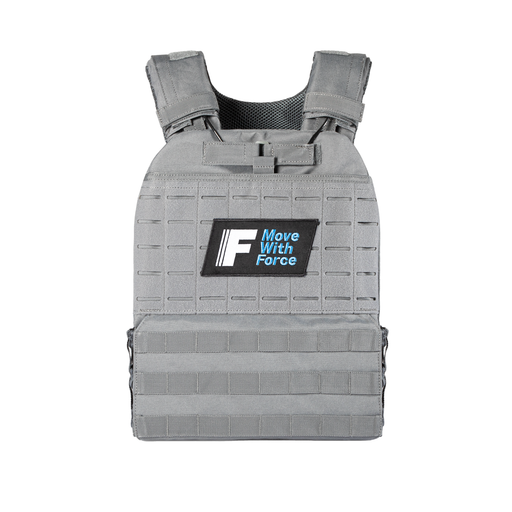
The world's greatest adventure challenges - 5 wettest adventures to try
Water represents a totally different world to explore.
This blog series explores the world's most exciting challenges, and this time we're diving into the wettest adventures. From epic swims to wild water rapids, these challenges will test your strength, courage, and cold acclimatisation!
Missed our previous posts in the series? Check out our darkest adventures, hottest adventures, and highest adventures for more inspiration.
Our pick of the world's wettest adventures
-
The Hellespont swim - Turkey
-
English Channel swim – England to France
-
Yukon River Canoe Race - Canada
-
Coasteering the Pembrokeshire coast - Wales
-
Colorado River Rafting expedition - USA
The Hellespont Swim – Turkey
What is it?
The “world’s oldest swim” is an annual 4.5km crossing that starts in Europe and ends in Asia, crossing the Hellespont or Dardanelles strait.
Where?
Turkey, specifically the Dardanelles strait between Europe and Asia.
What it involves:
Swimming from the European side of Turkey to the Asian side across the Hellespont, navigating a dog-leg course with strong currents and boat traffic to complete a relatively short but iconic open water swim.
Highlights:
Swimming between two continents in the footsteps of Lord Byron (who completed the swim in 1810), completing an open-water “must do” event, and experiencing the cultural significance of the ancient Hellespont crossing.
Risks:
Although the water isn’t cold, the currents can be strong and there’s heavy boat traffic including commercial vessels. Navigation can also be a challenge.
Who should do it?
Experienced open water swimmers with proven ability in challenging conditions. You'll need strong swimming technique and the ability to stay calm in a mass swim.
How to train:
Build endurance with long pool sessions and open water practice, cold water acclimatisation, and swimming skills including sighting and navigation.
English Channel Swimming – UK/France
What is it?
A solo, non-wetsuit swim from England to France, considered the "Everest of swimming" and one of the world's ultimate open water challenges.
Where?
Dover, England to wherever you end up (usually near Calais).
What it involves:
Swimming by yourself (with a pilot boat) for 10–15+ hours through one of the world's busiest shipping lanes, in low temperatures (15–18°C), with strong tides, jellyfish, and unpredictable weather conditions.
Highlights:
The kudos of completing a swim that only around 2000 people have done.
Risks:
Hypothermia, jellyfish stings, brutal tides, and the mental challenge of an open-ended timescale. There’s also the very real possibility of not succeeding.
Who should do it?
Elite open water swimmers with extensive cold water experience and proven ability to swim for 12+ hours continuously. The paperwork involves a 6-hour training swim in under 16°C water. You can also do the swim as a relay with a team, swimming one hour at a time in rotation.
How to train:
Cold water acclimatisation, building up to 6–8 hour training swims, night swimming practice, feeding strategies, and mental prep.
Yukon River Canoe Race – Canada
What is it?
A 444-mile canoe race from Whitehorse to Dawson City – the world's longest annual canoe and kayak race.
Where?
Yukon Territory, Canada.
What it involves:
Up to a week of paddling through wilderness rapids, unpredictable weather, wildlife encounters, and the physical demands of covering massive distances by paddle power.
Highlights:
Canada's incredible wilderness, following the historic Klondike gold rush route, and the camaraderie formed during days on the water.
Risks:
Hypothermia and exhaustion from cold water and weather, wildlife encounters (bears), and potential for getting lost in remote wilderness.
Who should do it?
Experienced paddlers with multi-day expedition skills, water safety knowledge, and wilderness survival experience.
How to train:
Long paddling sessions building up to multi-day expeditions, cold water training, and wilderness skills including navigation and emergency procedures.
Coasteering the Pembrokeshire Coast – Wales
What is it?
An extreme coastal adventure that includes rock climbing, cliff jumping, cave exploration, and swimming along the incredible Pembrokeshire coast.
Where?
Pembrokeshire Coast National Park, Wales, UK.
What it involves:
Traversing rugged coastal terrain by swimming through caves, jumping from cliffs up to 10m high, climbing wet rock faces, and navigating surge channels and blowholes.
Highlights:
Discovering hidden caves and secluded beaches only accessible from the sea, and the adrenaline rush of cliff jumping into deep water.
Risks:
Cold water temperatures, dangerous surf and tidal conditions, sharp rocks and barnacles, and the risks of cliff jumping and rock climbing in wet conditions.
Who should do it?
Adventure seekers comfortable with water and heights who have swimming ability. Previous rock climbing or water sports experience is beneficial but not essential with proper guidance.
How to train:
Build swimming fitness and comfort in rough water, practice rock climbing or bouldering, and work on general fitness and agility. Cold water acclimatisation is crucial.
Colorado River Rafting Expedition – USA
What is it?
A multi-day whitewater rafting expedition featuring some of North America's most challenging rapids.
Where?
Colorado River through Grand Canyon National Park, Arizona, USA.
What it involves:
6–18 days navigating Class V rapids, camping on beaches deep in the canyon, and one of the world's most spectacular river journeys.
Highlights:
Rafting one of the world's natural wonders, camping under star-filled skies, and conquering legendary rapids that have challenged generations of river runners.
Risks:
Whitewater hazards including hydraulics and keeper holes, extreme heat during summer months, flash flood potential, and remote environments.
Who should do it?
Different trips require different levels of experience, but you must be comfortable in water and prepared for physically demanding days. Some trips are guided and better for beginners.
How to train:
Swimming fitness, general conditioning for outdoor activities, and mental prep for challenging conditions. Consider starting with easier multi-day river trips.
Should you try the world's wettest adventures?
Swimming, kayaking, and coasteering adventures put you face to face with the raw power of nature. For any water-based adventures, you need to take safety seriously and respect the advice of guides and other athletes. Cold water skills and understanding weather and water conditions can make the difference between an epic adventure and a dangerous situation, so invest in training, guidance, and the right equipment.
Is water a yes please or a big no for you? Stay tuned for the next blog in our extreme adventure series – and let us know what your bucket-list adventures are.






















